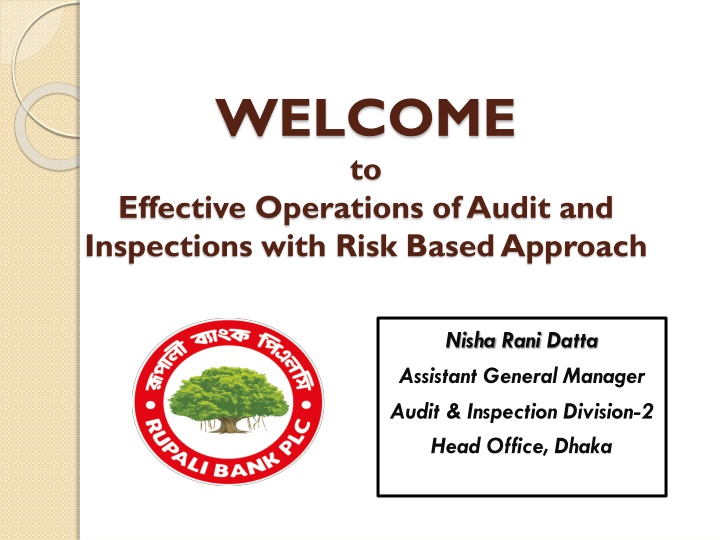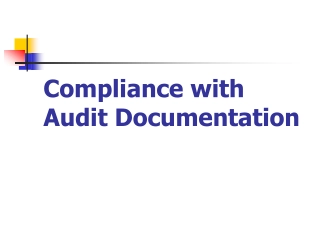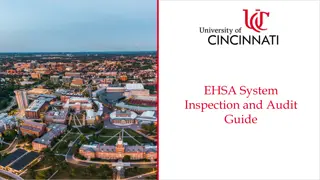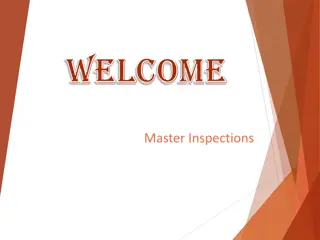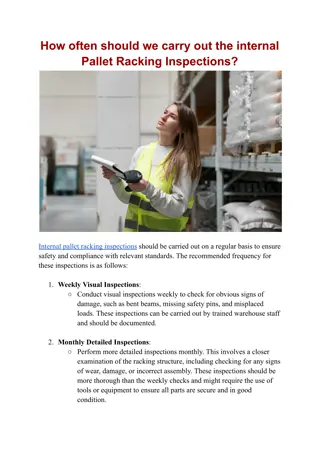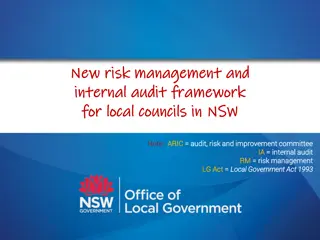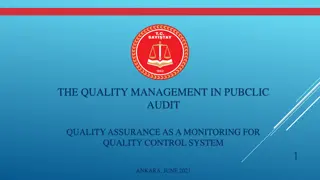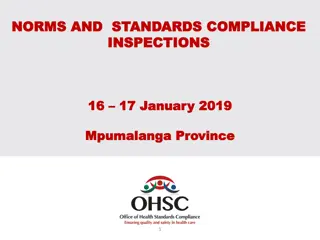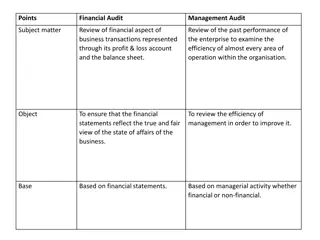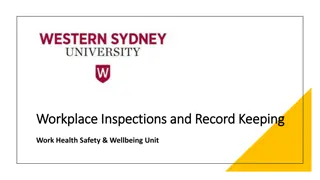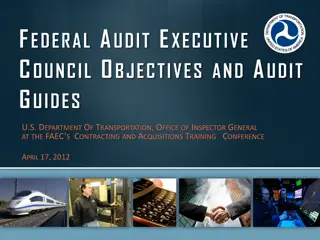Effective Operations of Audit and Inspections with Risk-Based Approach
Audit and inspection play a crucial role in ensuring risk detection, mitigation, and compliance within organizations. This article discusses the significance of a risk-based approach in internal audits and the effectiveness of audit and inspection processes. It also highlights the auditing of different expenditures and the internal control and compliance auditing in Rupali Bank PLC.
Download Presentation

Please find below an Image/Link to download the presentation.
The content on the website is provided AS IS for your information and personal use only. It may not be sold, licensed, or shared on other websites without obtaining consent from the author.If you encounter any issues during the download, it is possible that the publisher has removed the file from their server.
You are allowed to download the files provided on this website for personal or commercial use, subject to the condition that they are used lawfully. All files are the property of their respective owners.
The content on the website is provided AS IS for your information and personal use only. It may not be sold, licensed, or shared on other websites without obtaining consent from the author.
E N D
Presentation Transcript
WELCOME to Effective Operations of Audit and Inspections with Risk Based Approach Nisha Rani Datta Assistant General Manager Audit & Inspection Division-2 Head Office, Dhaka
Topics: 1. Auditing of Different type of Expenditures, Approval, Budget limit, 2.Furniture-Fixtures: Purchasing process, Depreciation Voucher passing etc. 3.Printing and Security Stationery: Physical verification of stock, Balancing, Consumption voucher releasing etc. 4. Rent contract
What is Audit and Inspection ? Both Audit and Inspection comes from latin word Audire & Inspectare
Effectiveness of Audit & Inspection Effective operations of Audit & Inspection depends on risk detection, mitigation & compliance. It ensures non repetitions of mistakes. It can be established by ensuring full compliance with rules, regulations and internal policies. It plays a vital role for establishing and exercising an effective control system within the organization.
What is Risk-Based Approach ? Risk-based Internal Audit(RBIA) is an internal methodology which is primarily focused on the inherent risk involved in the activities or system and provide assurance that risk is being managed by the management within the defined risk appetite level. It is the risk management management and seeks at every stage to reinforce the responsibility of Management and Board of Directors for managing risk. framework of the Risk based internal audit is conducted by internal audit department to help the risk management function of the bank by providing assurance about the risk mitigation.
Audit in Rupali Bank PLC. As a part of ICC (Internal Control & Compliance) audit is conducted by Audit & Inspection Division-1 and Audit & Inspection Division-2. ICC Audit & Inspection Compliance Monitoring Audit & Inspection-1 Audit & Inspection -2
Auditing of Different types of Expenditure approval & budget limit An expenditure is a payment of cash or credit for goods or services, often by a business, organization or corporation. The purchase may be to obtain new assets, improve upon or repair assets, or reduce liability. There are three types of expenditure audits - Financial Audit - Compliance Audit and - Performance Audit
Auditing of Different types of Expenditure approval & budget limit - Financial audits look at a company's financial statements to ensure they are accurate and up to date. - Compliance audits check whether a company is in compliance with laws, regulations and standards. - Performance audits check whether a company is achieving the objectives it set for itself.
Auditing of Different types of Expenditure approval & budget limit 1. The expenditure must be within the company's approved budget. 2. The expenditure must be properly documented. 3. The expenditure must be relevant to the company's objectives. 4. The expenditure must be legal. 5. The expenditure must be within the company's approved spending limit. 6. The expenditure must not have raised any red flags during previous audits. 7. The expenditure must be properly managed and monitored.
Furniture-Fixtures: Purchase Procedures, Depreciation Voucher passing All Procurement procedures of Furniture- fixtures in our bank is done by Procurement Division, Head Office as per the requirements of all branch, zonal office, divisional office and all divisions of head office. There are three methods used to procure furniture-fixtures. -Open tender Method(OTM) - Limited Tender Method(LTM) - Direct Purchase Method(DPM)/ Request for Quotation (RFQ)
Furniture-Fixtures: Purchase Procedures, Depreciation Voucher passing Depreciation rate - Furniture-10% of book value (Declining method) - Mechanical Appliance-20% of book value (Declining method) - Computer Accessories- 20% of purchasing value (Straight line method) Voucher passing Depreciation should be calculated on half yearly basis but voucher should be passed annually to the respective accounts.
Printing and Security Stationery: Physical verification of stock, Balancing, Consumption voucher releasing etc. Physical verification of printing and security stationary ensures that inventory is valued correctly, reducing the risk of tax-related issues. Improved decision-making, having an accurate inventory count allows organization to make informed decisions. Printing and security stationary are supplied by our controlling office . It should be checked and recorded (on register SB-56) and after getting challan the amount should be posted as asset on stationary stock in hand as follows: Dr Stationary stock in hand a/c Cr Head office a/c The record on register should be balanced on month basis. Consumption voucher should be released on quarter basis as follows: Dr Stationary expense a/c Cr Stationary stock in hand a/c
Rent Contract Bank renders its services in own or rented space by establishing its branch, zonal office, divisional office etc. In case of opening a new branch(office) or shifting of existing branch(office) in rented space the following procedure is maintained: 1. Area selection 2. Location 3. Comparative study 4. Rent proposal to land owner 5. Request for approval of head office after getting acceptance of land owner 6. NOC of Bangladesh Bank and Ministry of finance is required Contract between land owner and bank management
